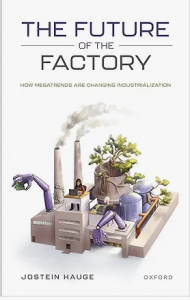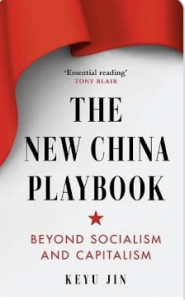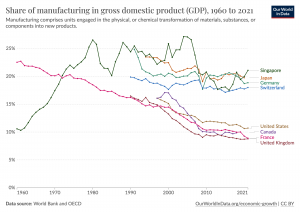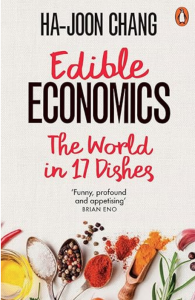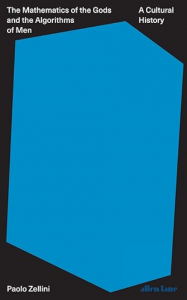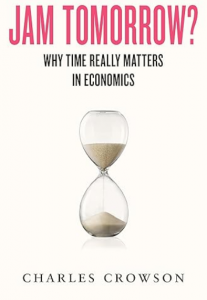I read my colleague Jostein Hauge’sThe Future of the Factory in proof and never got round to the finished book until now. It’s a very nice synthesis of the impact of four ‘megatrends’ on manufacturing. These four are the rise of the service sector as a share of output, digital automation, globalization and ecological crisis.
After an introductory chapter introducing industrial policy in historical perspective – opening with Alexander Hamilton in life as well as on stage – each trend gets a chapter on how it is shaping industrial activity. One conclusion is that the phenomenon of ‘servitisation’ in manufacturing – including outsourcing associated high value services – is significant and can lead people to underestimate the importance of manufacturing. The book also argues that the impact of digital automation is exaggerated – it will displace some activities and tasks but there is a lot of hype. It also argues that the retreat from globalisation is similarly over-stated, and the debate disguises power asymmetries between western multinationals and firms in their low or middle income supply chain countries. And the environmental crisis is a further source of this economic and political asymmetry.
The conclusion is that, “in a world of technological change and disruptions, industrialization and factory-based production remains a cornerstone of economic prgoress. Jostein welcomes the recent revival of industrial policies but calls for a focus now on the global South and the place these countries have in the network of production. The book ends with a call for a fairer kind of capitalism than the current model.
All of this is packed into a compact and very readable book. And I’m glad I’m not the only person who saw Hamilton The Musical and wished there had been more economic policy in the show…